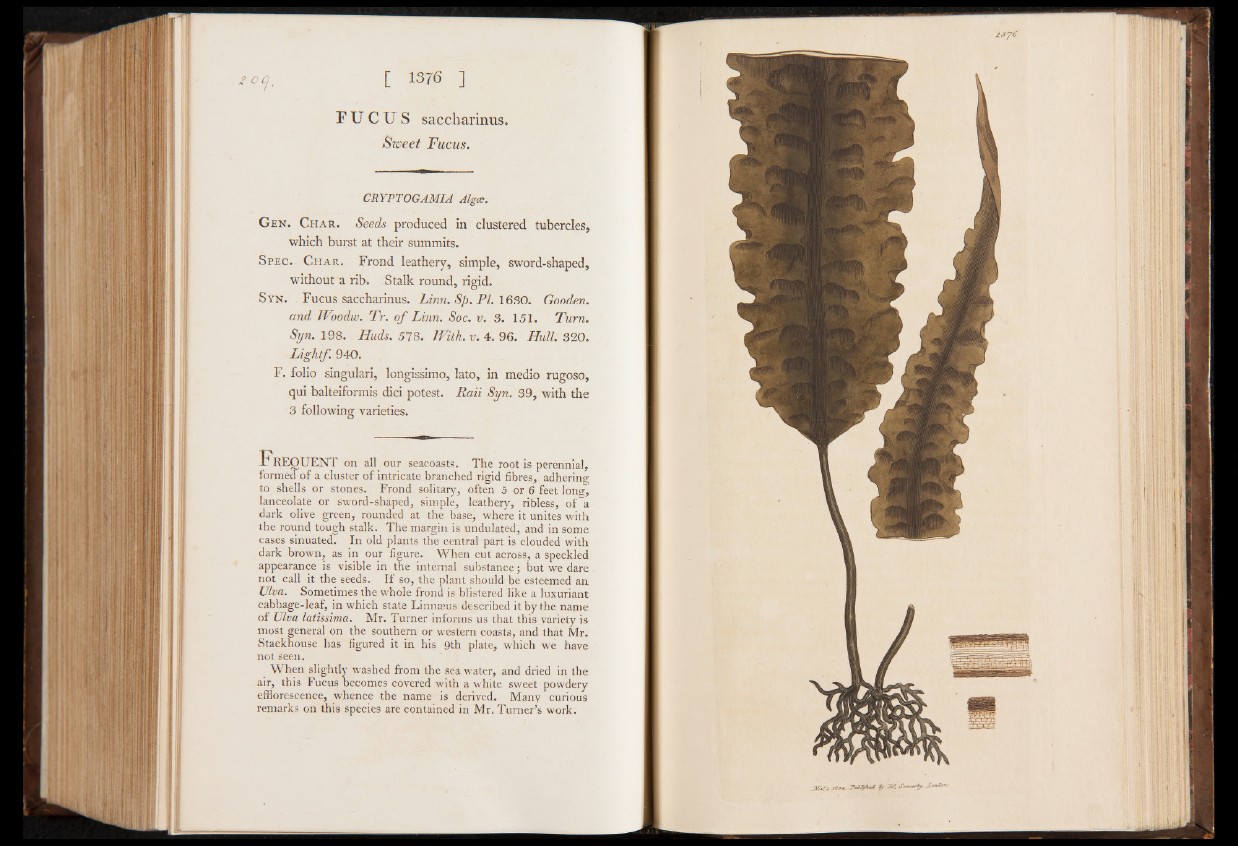
o a [ 13 76 ]
F U C U S saccharinus.
Szveet Fucus.
CRYPTOGAMIA Algæ.
Gen. C h a r . Seeds produced in clustered tubercles,
which burst at their summits.
S p e c . C h a r . Frond leathery, simple, sword-shaped,
without a ribi Stalk round, rigid.
Syn. Fucus saccharinus. Linn. Sp. PL 1630. Gooden,
and Woodw. Tr. o f Linn. Soc. v. 3. 151. Turn.
Syn. 198. Huds. 578. IVith. v. 4. 96. Hull. 320.
L ig h tf 940.
F. folio singulari, longissimo, lato, in medio rugoso,
qui balteiformis did potest. Rail Syn. 39, with the
3 following varieties.
F r e q u e n t on all our seacoasts. The root is perennial,
formed of a cluster of intricate branched rigid fibres, adhering
to shells or stones. Frond solitary, often 5 or 6 feet long,
lanceolate or sword-shaped, simple, leathery, ribless, of a
dark olive green, rounded at the base, where it unites with
the round tough stalk. The margin is undulated, and in some
cases sinuated. In old plants the central part is clouded with
dark brown, as in our figure. When cut across, a speckled
appearance is visible in the internal substance; but we dare
not call it the seeds. If so, the plant should be esteemed an
Viva. Sometimes the whole frond is blistered like a luxuriant
cabbage-leaf, in which state Linnaeus described it by the name
of Viva latissima. Mr. Turner informs us that this variety is
most general on the southern or western coasts, and that Mr.
Stackhouse has figured it in his gth plate, which we have
not seen.
When slightly washed from the sea water, and dried in the
air, this Fucus becomes covered with a white sweet powdery
efflorescence, whence the name is derived. Many curious
remarks on this species are contained in Mr. Turner’s work.